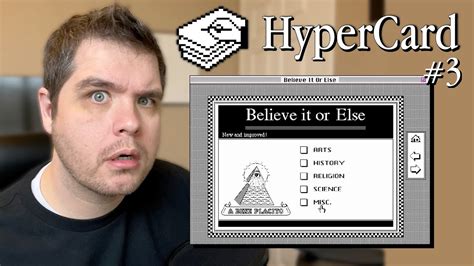Once upon a time, HyperCard was the gateway for many into the world of programming. Released by Apple in 1987, it allowed users, regardless of their programming proficiency, to craft interactive software with a simple ‘card’-based layout. This introduced many to the joys and potentials of coding, tying visual components easily to programming actions. However, like all good things, HyperCard’s prominent status in the tech world dwindled, prompting tech enthusiasts to often ask: what is the HyperCard of today?
The conversation around modern equivalents to HyperCard is lively and diverse, reflecting the vastly expanded landscape of programming tools now available. From Scratch, used widely in education, to more intricate setups like LiveCode and Decker, the options are rich but each serves unique needs and skills levels. Scratch, for instance, though often deemed elementary, harbors a deep potential for complex projects, while LiveCode represents a more direct spiritual successor to HyperCard with its easy-to-grasp programming language and robust capabilities.
Care to dive deeper into specifics? Let’s take a look at Decker, which, according to user testimonials, appears to preserve the soul of HyperCard while adapting its features for the internet age. Initially limited by the lack of networking capabilities, recent updates have expanded its functionalities, including the ability to make network requests. This opens new doors for users looking to integrate more complex, web-based actions into their projects.
Scratching beneath the surface, Scratch itself might be written off as too basic by some. However, its design encourages learners to tackle complex logical structures and manage project complexities, an educational scaffold that is invaluable. As a stepping stone, it comfortably launches learners into more advanced languages like Python or JavaScript, where they can continue to expand their programming vocabulary.
The conversation doesn’t end at children’s education. The vast array of tools like Blockly and Snap—extensions and reincarnations in the spirit of Scratch—suggest a rich vein of tools tailored to various stages of learning. Blockly, for example, not only extends Scratch’s block-based approach to coding but also bridges users gently into text-based coding, offering outputs in JavaScript and Python.
Distinct from merely children’s education tools, platforms like Bubble and Gambas cater to non-coders and those nostalgic for the 90s programming ethos. Bubble, despite criticisms regarding its complexity, and Gambas, resonating with Linux users with its BASIC-like environment, illustrate the spectrum of modern tools that echo the simplicity yet depth of HyperCard.
Throwing another dimension into the mix, the web itself acts as a vast, sprawling canvas for coding newbies. HTML and JavaScript provide immediate gratification for simple projects, much like HyperCard did, fostering a sandbox for creativity. Tools and platforms that leverage this web-based model, like Twine for interactive storytelling and Jupyter Notebooks for data-driven projects, exemplify the ongoing evolution from static cards to dynamic pages and scripts.
One must not overlook the community and educational frameworks that surround these tools. Forums, online tutorials, and vibrant communities provide crucial support for learners. The parallels to HyperCard’s past community of enthusiastic amateurs are clear, but today’s landscape is vast and varied, offering a richer, albeit more complex, arena for learning and growth in programming. Whether it’s revisiting the feel of HyperCard through Decker or stretching into new territories with platforms like Blockly and Snap, there is a wealth of paths to explore in today’s digital playground.


Leave a Reply